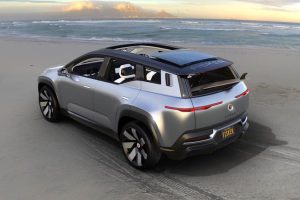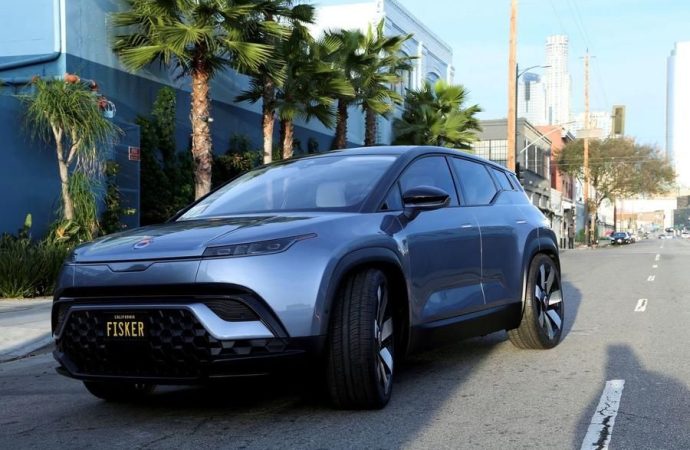Introduction The automotive industry has been witnessing a significant transformation, especially in the electric vehicle (EV) sector, as companies like Fisker aim to revolutionize the market with sustainable and innovative models. However, the choice between selling EVs through traditional dealerships or employing a direct-to-consumer (DTC) model presents a critical strategic decision. This article aims to
Introduction
The automotive industry has been witnessing a significant transformation, especially in the electric vehicle (EV) sector, as companies like Fisker aim to revolutionize the market with sustainable and innovative models. However, the choice between selling EVs through traditional dealerships or employing a direct-to-consumer (DTC) model presents a critical strategic decision. This article aims to scrutinize the effectiveness and challenges associated with both approaches, particularly in the context of Fisker’s ambitions and the broader EV industry.
Traditional Yet Established
Effectiveness
The dealership model, deeply entrenched in the automotive industry, has historically been the primary channel for vehicle sales. Dealerships offer a physical presence, providing potential buyers the opportunity for test drives, personalized customer service, and immediate purchase facilitation. This model offers convenience, leveraging the expertise and existing infrastructure of dealers to promote and sell vehicles. For established automakers, dealerships serve as a vital link in the sales chain, benefiting from brand recognition and customer loyalty cultivated over time.
Challenges
However, the dealership model presents challenges in the context of EVs. Dealerships might lack sufficient knowledge and enthusiasm for EVs, potentially leading to inadequate sales incentives or promotion. EVs often demand a unique sales approach, focusing on educating consumers about technology, charging infrastructure, and environmental benefits. Moreover, the traditional dealership model could lead to conflicts of interest, as some dealers might favor traditional internal combustion engine (ICE) vehicles due to their service and maintenance revenue streams, potentially undermining EV sales efforts.

Image By:https://cars.usnews.com
Direct-to-Consumer Model
Effectiveness
The DTC model, increasingly popular among newer automakers like Tesla, seeks to bypass the traditional dealership system, selling vehicles directly to consumers. This approach eliminates the intermediary, allowing companies like Fisker to maintain more control over the sales process, customer experience, and pricing. Direct sales channels provide an opportunity for EV manufacturers to directly educate and engage consumers about their EV offerings, focusing on sustainability, technological innovations, and the overall brand story.
Challenges
However, the DTC model faces regulatory hurdles in many states and countries. Several jurisdictions have laws prohibiting or restricting direct sales by manufacturers, mandating the involvement of third-party dealerships. Overcoming these legal barriers demands substantial resources and lobbying efforts. Additionally, establishing a robust sales and service infrastructure without leveraging existing dealership networks might pose challenges, especially in terms of market reach, service accessibility, and customer convenience.
Fisker’s Perspective
Fisker, aiming to disrupt the EV market with its sustainable, design-centric vehicles, faces a critical decision regarding its sales strategy. While the DTC model aligns with its innovative ethos, leveraging established dealerships might provide faster market access and broader reach, particularly in regions where direct sales face regulatory hurdles. Fisker’s success hinges on striking a balance between innovation and market penetration. The company could potentially adopt a hybrid approach, initially utilizing existing dealerships for market entry while concurrently pursuing legislative changes and investing in its DTC infrastructure for long-term sustainability and customer engagement.
Implications for the EV Industry
In the broader EV landscape, the choice between dealership and DTC models holds profound implications. The industry’s growth and consumer adoption of EVs rely not only on superior technology but also on effective sales and distribution strategies. As more traditional automakers and newer entrants compete in the EV market, finding the most efficient sales approach becomes pivotal. Collaboration between manufacturers, dealerships, and policymakers is essential to establish a conducive environment for EV sales. Policy reforms allowing more flexibility in sales models while incentivizing EV adoption can foster innovation and competition, benefiting both consumers and the environment.

Image By:https://cars.usnews.com
Conclusion
The decision between the dealership and DTC models for selling EVs, including Fisker’s unique position, involves a nuanced evaluation of advantages, challenges, and long-term sustainability. While the dealership model offers an established infrastructure, the DTC model presents an opportunity for innovation and direct consumer engagement. Fisker and the broader EV industry must navigate this strategic choice to optimize market reach, customer satisfaction, and sustainable growth in the evolving landscape of electric mobility. Collaboration, innovation, and a deep understanding of consumer needs will be key to shaping the future of EV sales.

















Leave a Comment
Your email address will not be published. Required fields are marked with *